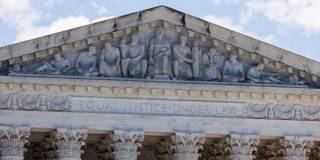The US Supreme Court’s 6-3 conservative supermajority, having demonstrated its willingness to undermine long-standing government powers to further an anti-regulatory crusade, has emboldened both opportunists and ideologues. The threat to America’s fiscal system should not be underestimated.
CHICAGO – Americans are notorious for turning virtually every dispute into a lawsuit. But the basic terms of America’s fiscal contract, which determines how the federal government finances its operations – the goods and services it provides – have so far remained untouched by legal challenges. Two recent Supreme Court cases threatened to change this. They failed, but only barely, and the forces that advanced them are unlikely to give up any time soon.

CHICAGO – Americans are notorious for turning virtually every dispute into a lawsuit. But the basic terms of America’s fiscal contract, which determines how the federal government finances its operations – the goods and services it provides – have so far remained untouched by legal challenges. Two recent Supreme Court cases threatened to change this. They failed, but only barely, and the forces that advanced them are unlikely to give up any time soon.